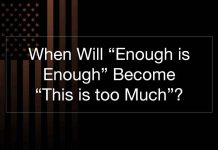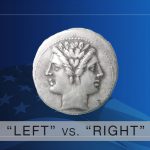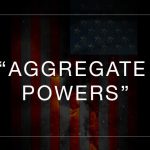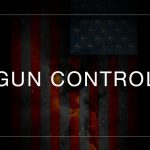Last Updated on April 1, 2021 by Constitutional Militia
III. Conclusion
In sum, the foregoing analysis of Abood provides further evidence that the Supreme Court has knowingly and intentionally twisted the Constitution, and even its own decisions, out of all recognizable shape in order to uphold and extend the primary abuses of compulsory public-sector unionism:
· assessment of agency fees–Abood;
· collection of agency fees without the normal protections of procedural due process applicable to all other forms of property–Hudson;
· exclusive representation in general–Knight I,;
· exclusive representation by a militant, nationwide political-action organization–Knight I;
· union monopoly privileges beyond the exclusive right to bargain collectively–Perry and Knight II;
· nationwide collection of agency fees–Lehnert;
· expansion of the definition of “collective bargaining” and of the powers of exclusive representatives under that rubric beyond what State statutes actually allow–Lehnert.
In each of these cases (and others preceding them in private-sector employment[67]), the Court could have (on perfectly sound constitutional grounds) and should have (on prudential grounds) severely limited, if not altogether eliminated, these abuses. In every instance, however, a majority chose the opposite course–and in Knight I, their course was transparent in its trickery.[68]
But duplicity was at work both before and after Knight I–and not simply in the Court’s floating of the childishly false myth in Hudson that Abood had upheld exclusive representation in public-sector employment.[69] True enough, on its (de)merits, Hudson itself was an exercise in studied duplicity, with the Court’s creation from whole cloth of the theory of “First-Amendment due process” that apparently applies only to labor unions collecting agency fees, and in practice denies nonunion employees the full panoply of due-process protections available to everyone else.[70] Abood, though, defined the agenda, set the stage, refined the technique, and provided the precedent for all subsequent judicial deceits in public-sector labor relations–and, as Knight I and Hudson show, should therefore be condemned as the fons errorum of, or at least the Court’s ever-ready excuse for, everything that followed it.
Thus, the problem of compulsory unionism so vexing public education today must be deemed the effect of essentially a single cause: the Supreme Court’s bad faith–primarily, its falsehoods in:
· Abood, that Hanson and Street “compelled” the Court to uphold the “agency shop”; and
· Knight II (interpreting Knight I) and then in Hudson, that Abood had upheld exclusive representation.
The proof of the charge of judicial deceit lies in the thick, intellectually indigestible pudding of undeniable (but otherwise inexplicable) facts that the Court itself served up. For example, why was there no oral argument, briefing and opinion in Knight I; but there was in Knight II? Obviously, the Justices wanted it this way, inasmuch as both appeals arose out of the selfsame litigation and touched on intimately interrelated, if not really inextricable, issues; the Court was required to hear both cases on appeal;[71] and the Justices chose to dispose of one (Knight I) summarily, but to grant the other (Knight II) a full hearing.
This dichotomy of treatment is totally inexplicable as a mere matter of judicial technique and legal argumentation because: Knight I raised fundamental and novel–indeed, unique–questions concerning the validity of compulsory public-sector collective bargaining through exclusive representation, both in principle and as applied specifically to the NEA; whereas, Knight II raised merely the subsidiary and derivative question of whether exclusive representation could be extended from actual binding negotiations to mere nonbinding conferences between teachers and school administrators (the so-called “meet and confer” process of the Minnesota public-sector labor-relations law). And Knight II explicitly relied on Knight I to uphold the limitation of “meet and confer” sessions to the exclusive representative, saying that,
[i]f it is rational for the State to give the exclusive representative a unique role in the [collective-bargaining] process, as the summary affirmance in [Knight I] presupposes, it is rational for the State to do the same in the ‘meet and confer’ process.[72]
Knight II, however, did not explain in what context, or by what chain of reasoning, Knight I “presuppose[d]” the rationality of exclusive representation, or whether that context was realistic and that reasoning defensible. Rather, the opinion left its readers to assume on faith that Knight I was correct, while knowing–and certainly being told–next to nothing about the many serious constitutional issues of first impression raised in that case.
Knight II also said that Knight I “rejected the argument, based on A.L.A. Schechter Poultry Corp. v. United States, 295 U.S. 495 (1935), and Carter v. Carter Coal Co., 298 U.S. 238 (1936), that [exclusive representation] unconstitutionally delegated legislative authority to private parties.”[73] But, again, Knight II did not describe the argument on “delegat[ion of] legislative authority to private parties”; nor how Schechter Poultry Corp.and Carter were material to that argument; nor on what bases in fact and law the Court in Knight I “rejected” the argument; nor why that Court did not bother to respond to Justice Powell’s warnings in Abood that a “collective bargaining agreement to which a public agency is a party … has all the attributes of legislation,” and that “voters could complain with force and reason that their voting power and influence on the [governmental] decision making process has been constitutionally diluted” by a statute delegating exclusive power to a union to participate in making the economic laws that affect it.[74]
Obviously, the Justices wanted the results of Abood and Knight I without having to explain–one can only presume because they were unable or afraid to expose to the light of day–their true rationales for those decisions. Doubtlessly, this is why they falsely attributed Abood to Hanson (throughout Abood itself), and Knight I to Abood (in Hudson).[75]
And what were the results of all these machinations? Twofold: When the Court disingenuously relied on Abood and Knight I, it:
· upheld compulsory public-sector collective bargaining through exclusive representation, without airing the most serious constitutional questions exclusive representation raises; and
· licensed national public-sector unions to exercise enormous and uncontrollable power through compulsory collective bargaining, to what end the Court could not possibly predict (and apparently did not care)–uncontrollable power because by their disposition of Knight I the Justices demonstrated that they intended not even to inquire into, let alone to control, it.
Therefore, as a consequence of the Supreme Court’s decisions from Abood to Knight I and beyond, the direction of public education has in some–and many observers would say in large–measure been surrendered to public-sector unions and their allies among politicians, bureaucrats, and the intelligentsiia, with the adverse consequences that most everyone today recognizes, but without the chain of legal cause and effect being apparent to more than a vanishingly small minority of people who have had the time, expertise, and stomachs to uncover the Court’s dirty maneuvers.
Those who dig into this situation can only conclude that it is a travesty of the judicial process, a tragedy for students and teachers locked into government schools, and fundamentally a species of treason against the American people by the branch of government the Founding Fathers assumed was the least dangerous. But, at least in this area, the judiciary has proven itself the most dangerous of all. Perhaps, though, as more people come to realize what has happened, and why, public disgust and outrage will finally compel the judiciary to admit and make amends for its misdeeds. Otherwise, if the past is any harbinger, the future looms dark indeed.



































